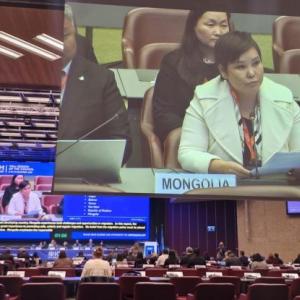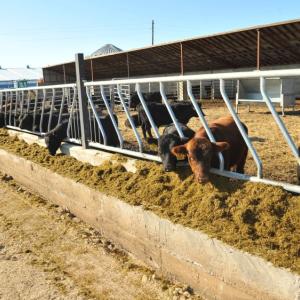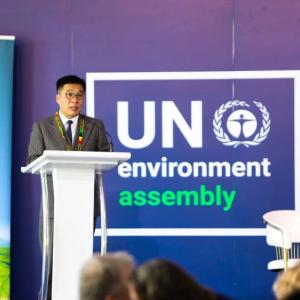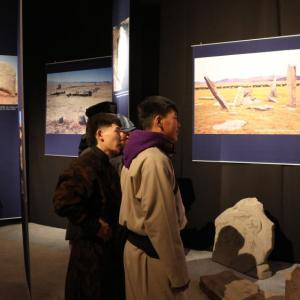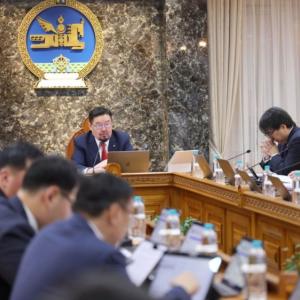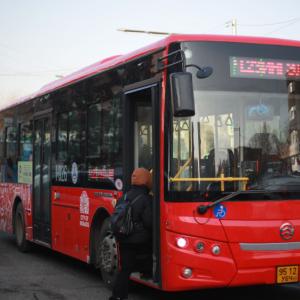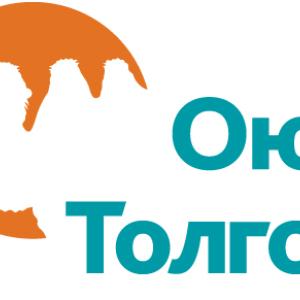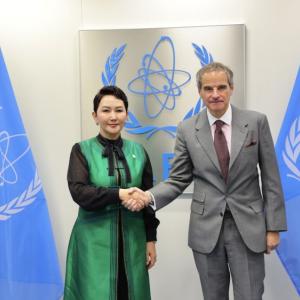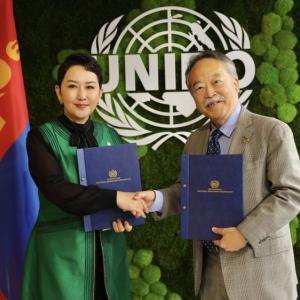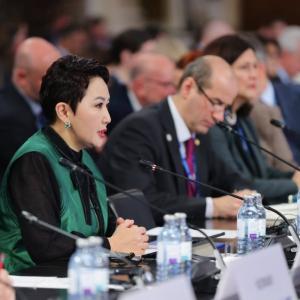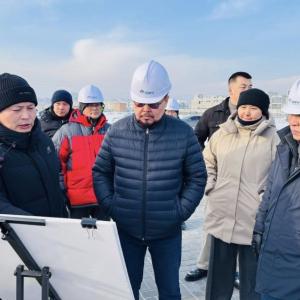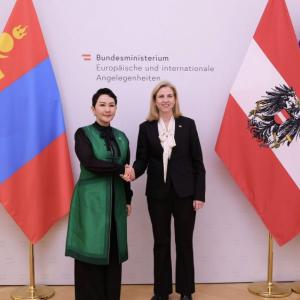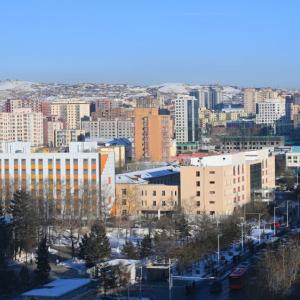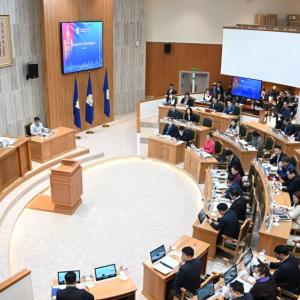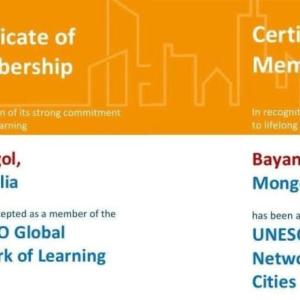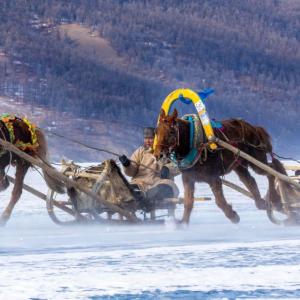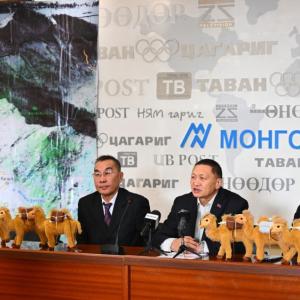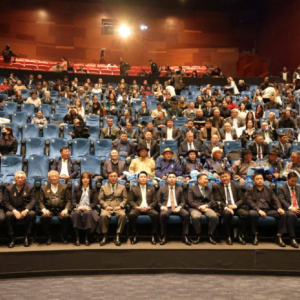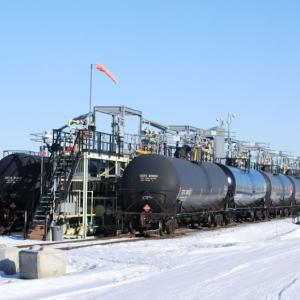Mongolia has potential to lead the region in renewable energy production
The Mongol Messenger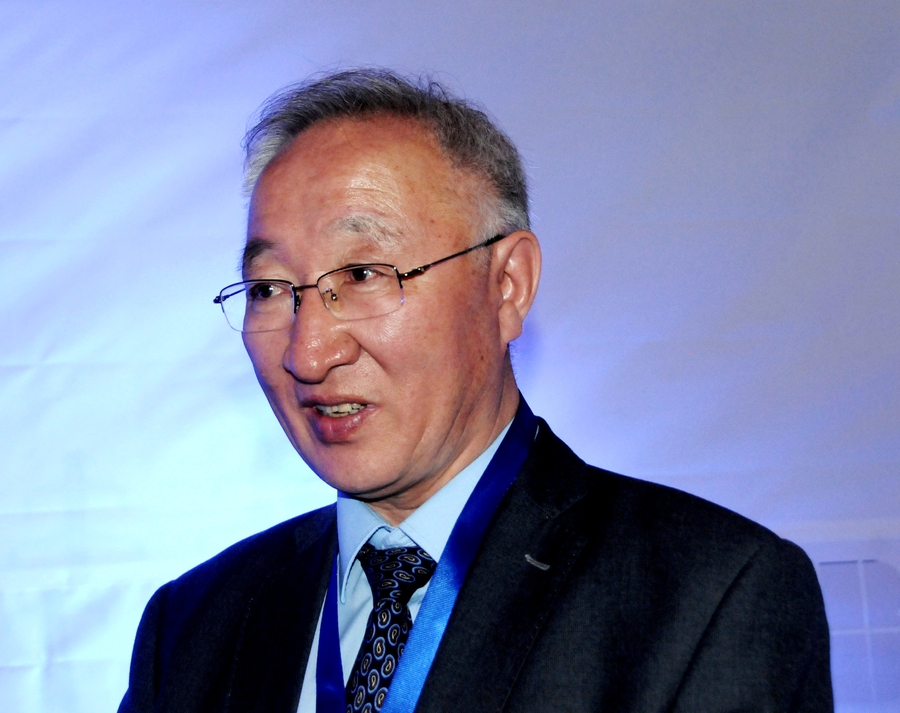
Dr. Enebish Namjil is a professor at the National University of Mongolia. He worked as administrator for the Darkhan Solar Plant Project (10MW) which commissioned its full operations on January 19, 2017 in Khongor Soum of Darkhan-Uul Aimag. Dr. Enebish spoke with the Mongol Messenger during his participation in the 8th National Renewable Energy Forum and shared his thoughts on Mongolia's capability to utilize renewable energy.
First of all, let me congratulate you on successfully commissioning the Darkhan Solar Plant. How is the plant’s operation going? To what extent does it contribute to the central energy network?
The project was successfully completed. Mongolia’s total electricity consumption is roughly 1GW. Nearly 90 percent of this demand is met by the centralized energy system which means 800-900 MW. The 10 MW of energy produced by the Darkhan Solar Plant is a tiny contribution.
In your opinion, which one of the three main sources of renewable energy – water, wind and sun – is the most viable in Mongolia?
All three of them are viable in our country. All we need to do is to come up with the right and ambitious policy. While Mongolia can be ranked 5th in the world with its underground mineral resources, it can top the globe with its capacity to utilize renewable energy. The Mongolian Gobi desert is advantageous for it is studied more closely compared to other deserts such as the Sahara and Arizona.
Starting in 1999, we teamed up with international experts and studied feasibilities of the Gobi for utilization of renewable energy and even came up with technological solutions to exploit the great resources. Our studies have proven that mega plants with 10-100 times larger capacities than the total energy consumption of Mongolia can be built in the Gobi. Mongolia has nothing to lose because such plants only require a minuscule part of the vast Gobi region. The land will not be dug or depraved in any way; it will only be used for its sunlight and wind. Mongolia will benefit from the high-tech and possibility of exporting the excess energy that's produced. Only the tax revenue of such amount of renewable energy exports will be enough to increase Mongolia’s GDP several times.
Will these large developments require a great amount of other type of sources such as water?
Renewable energy plants never use millions of tons of water like thermal power plants. Water will only be required for drinking and cleaning the main equipment once or twice a year. Wind farms do not use water for their operation. Besides, Mongolia has a chance to prosper utilizing the power of its surface water source. Isn’t it regretful to know that we are wasting ground water, which is a more precious resource than gold itself, just to operate the cooling system of thermal plants and see the ground water evaporate in a few years? The world's most developed countries have actually been practicing utilization of surface water for development. The usage rate of surface and ground water is normally 90:10 in developed nations, whereas the rate is almost the opposite in Mongolia.
Does this mean you support the building of hydropower plants in Mongolia?
Absolutely...hydro-plants use only the flowing force. The important thing is to build them according to proper standards and technology.
What's your opinion of Orkhon-Gobi project?
I take it as one of the best initiatives in terms of its significance in expanding green zones in the Gobi region and improving drinking water supply to the Gobi. There are many projects such as Orkhon-Gobi with similar technological models in other countries. Orkhon-Gobi project is one of the most outstanding alternatives of making use of the surface water that flows through the territory. As such, I think this is the best project so far that offers the use of surface water to satisfy the water consumption of Mongolia. In its absence, major mines in the Gobi, namely, Oyu Tolgoi and Tsagaansuvarga obviously use ground water. As I said earlier, ground water is more precious than copper or gold. It is reckless that we are wasting something more valuable to produce things of less value. There is no disadvantage for Mongolia to become a renewable energy producer. It will require land area which would equal to less than one percent of the country's territory, yet be enough to make this country wealthy by multiplying the GDP several times. Renewable energy resources, for Mongolia, are an unexplored "gold mine".
Does Mongolia have enough professional cadres to move such large-scale projects forward?
Mongolia does have a certain level of professional force. The government has been attaching greater importance to the issue. I can name the agreement with the Government of Japan on preparing 'One Thousand Engineers'. Training specialists in renewable energy and electrical engineering is a priority. There are renewable energy engineering courses opening at the Mongolian University of Science and Technology and 20-30 students graduate every year. I am a lecturer at the National University of Mongolia. Ten students from the university are studying in Japan to earn Master's and Doctor's degrees in renewable energy. Also, to operate wind farms or solar plants requires only two or three highly-skilled engineers. Only two engineers are operating the Darkhan Solar Plant, commissioned recently. Combined with three security guards, three dispatchers, a director and driver, only 11 personnel are required to run the whole plant. On the other hand, a thermal power plant with equal capacity as the solar plant hire 300-400 workers just to run smooth operations.
Can Mongolia become exporter of renewable energy?
The very lucid example of reaching the goal of establishing export-targeted production might actually be the production of renewable energy. Especially, producing solar and wind energy is a development passage for Mongolia. For the time being, mining is the main source of our country's income; it is an inarguable truth. Nevertheless, Mongolia can certainly become a regional pillar of renewable energy production. In order to make this come true, the Government should commit uncompromisingly to carry-out negotiations and deals with our two great neighbors and other countries in Northeast Asia.
First of all, let me congratulate you on successfully commissioning the Darkhan Solar Plant. How is the plant’s operation going? To what extent does it contribute to the central energy network?
The project was successfully completed. Mongolia’s total electricity consumption is roughly 1GW. Nearly 90 percent of this demand is met by the centralized energy system which means 800-900 MW. The 10 MW of energy produced by the Darkhan Solar Plant is a tiny contribution.
In your opinion, which one of the three main sources of renewable energy – water, wind and sun – is the most viable in Mongolia?
All three of them are viable in our country. All we need to do is to come up with the right and ambitious policy. While Mongolia can be ranked 5th in the world with its underground mineral resources, it can top the globe with its capacity to utilize renewable energy. The Mongolian Gobi desert is advantageous for it is studied more closely compared to other deserts such as the Sahara and Arizona.
Starting in 1999, we teamed up with international experts and studied feasibilities of the Gobi for utilization of renewable energy and even came up with technological solutions to exploit the great resources. Our studies have proven that mega plants with 10-100 times larger capacities than the total energy consumption of Mongolia can be built in the Gobi. Mongolia has nothing to lose because such plants only require a minuscule part of the vast Gobi region. The land will not be dug or depraved in any way; it will only be used for its sunlight and wind. Mongolia will benefit from the high-tech and possibility of exporting the excess energy that's produced. Only the tax revenue of such amount of renewable energy exports will be enough to increase Mongolia’s GDP several times.
Will these large developments require a great amount of other type of sources such as water?
Renewable energy plants never use millions of tons of water like thermal power plants. Water will only be required for drinking and cleaning the main equipment once or twice a year. Wind farms do not use water for their operation. Besides, Mongolia has a chance to prosper utilizing the power of its surface water source. Isn’t it regretful to know that we are wasting ground water, which is a more precious resource than gold itself, just to operate the cooling system of thermal plants and see the ground water evaporate in a few years? The world's most developed countries have actually been practicing utilization of surface water for development. The usage rate of surface and ground water is normally 90:10 in developed nations, whereas the rate is almost the opposite in Mongolia.
Does this mean you support the building of hydropower plants in Mongolia?
Absolutely...hydro-plants use only the flowing force. The important thing is to build them according to proper standards and technology.
What's your opinion of Orkhon-Gobi project?
I take it as one of the best initiatives in terms of its significance in expanding green zones in the Gobi region and improving drinking water supply to the Gobi. There are many projects such as Orkhon-Gobi with similar technological models in other countries. Orkhon-Gobi project is one of the most outstanding alternatives of making use of the surface water that flows through the territory. As such, I think this is the best project so far that offers the use of surface water to satisfy the water consumption of Mongolia. In its absence, major mines in the Gobi, namely, Oyu Tolgoi and Tsagaansuvarga obviously use ground water. As I said earlier, ground water is more precious than copper or gold. It is reckless that we are wasting something more valuable to produce things of less value. There is no disadvantage for Mongolia to become a renewable energy producer. It will require land area which would equal to less than one percent of the country's territory, yet be enough to make this country wealthy by multiplying the GDP several times. Renewable energy resources, for Mongolia, are an unexplored "gold mine".
Does Mongolia have enough professional cadres to move such large-scale projects forward?
Mongolia does have a certain level of professional force. The government has been attaching greater importance to the issue. I can name the agreement with the Government of Japan on preparing 'One Thousand Engineers'. Training specialists in renewable energy and electrical engineering is a priority. There are renewable energy engineering courses opening at the Mongolian University of Science and Technology and 20-30 students graduate every year. I am a lecturer at the National University of Mongolia. Ten students from the university are studying in Japan to earn Master's and Doctor's degrees in renewable energy. Also, to operate wind farms or solar plants requires only two or three highly-skilled engineers. Only two engineers are operating the Darkhan Solar Plant, commissioned recently. Combined with three security guards, three dispatchers, a director and driver, only 11 personnel are required to run the whole plant. On the other hand, a thermal power plant with equal capacity as the solar plant hire 300-400 workers just to run smooth operations.
Can Mongolia become exporter of renewable energy?
The very lucid example of reaching the goal of establishing export-targeted production might actually be the production of renewable energy. Especially, producing solar and wind energy is a development passage for Mongolia. For the time being, mining is the main source of our country's income; it is an inarguable truth. Nevertheless, Mongolia can certainly become a regional pillar of renewable energy production. In order to make this come true, the Government should commit uncompromisingly to carry-out negotiations and deals with our two great neighbors and other countries in Northeast Asia.
B.Amarsaikhan
The interview first appeared in the Mongol Messenger's issue No. 19 for May 12, 2017
 Ulaanbaatar
Ulaanbaatar





